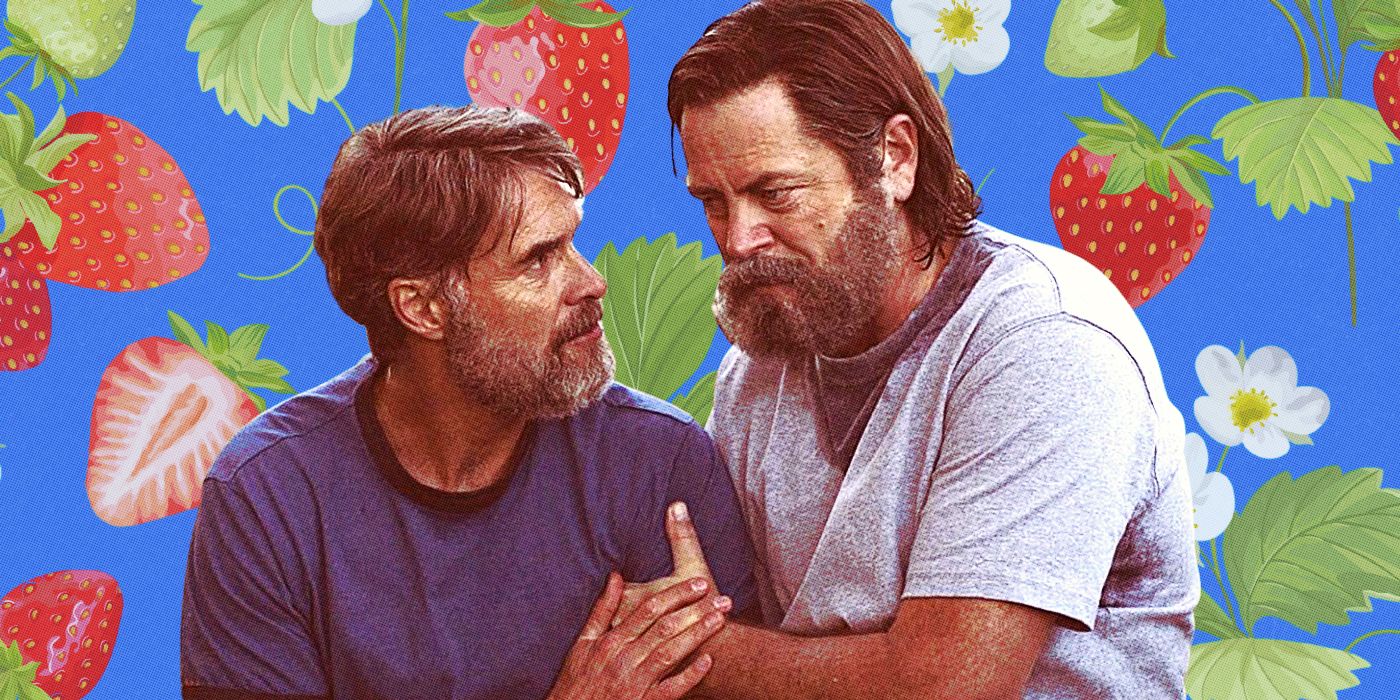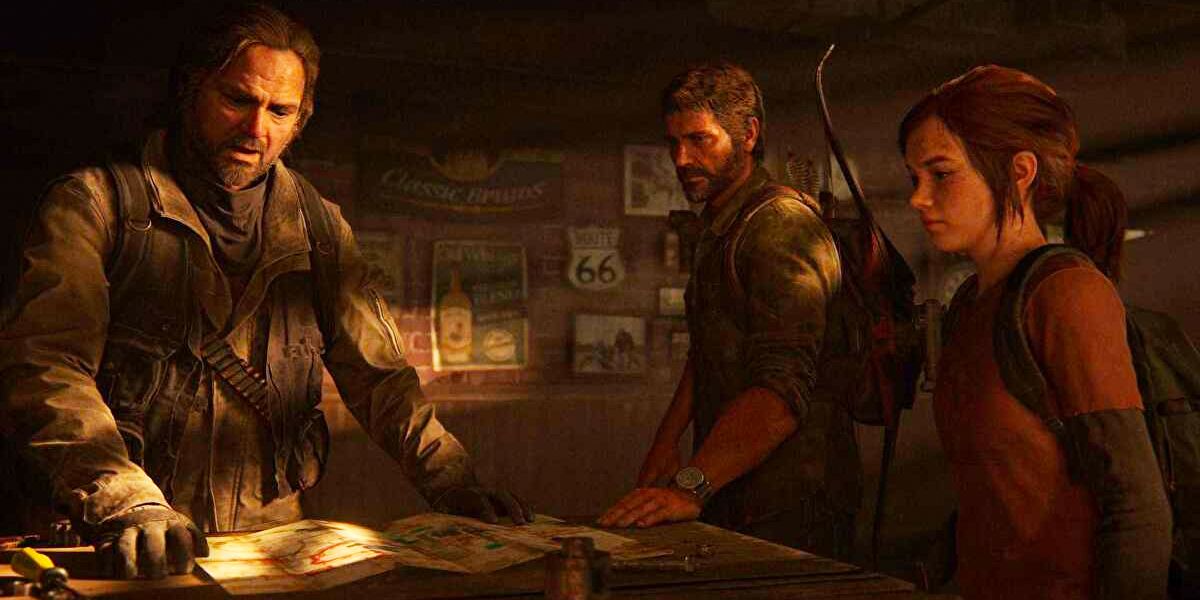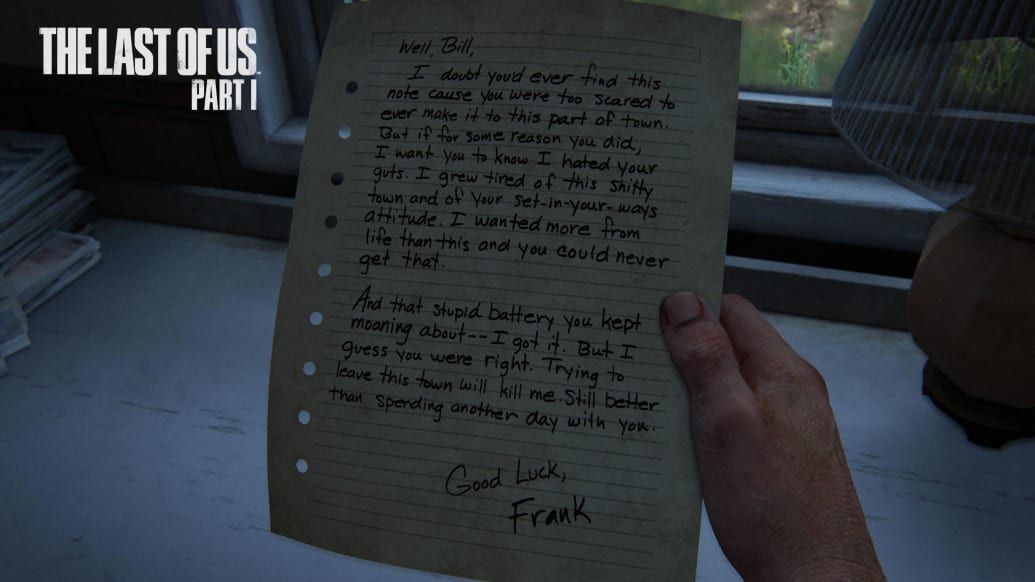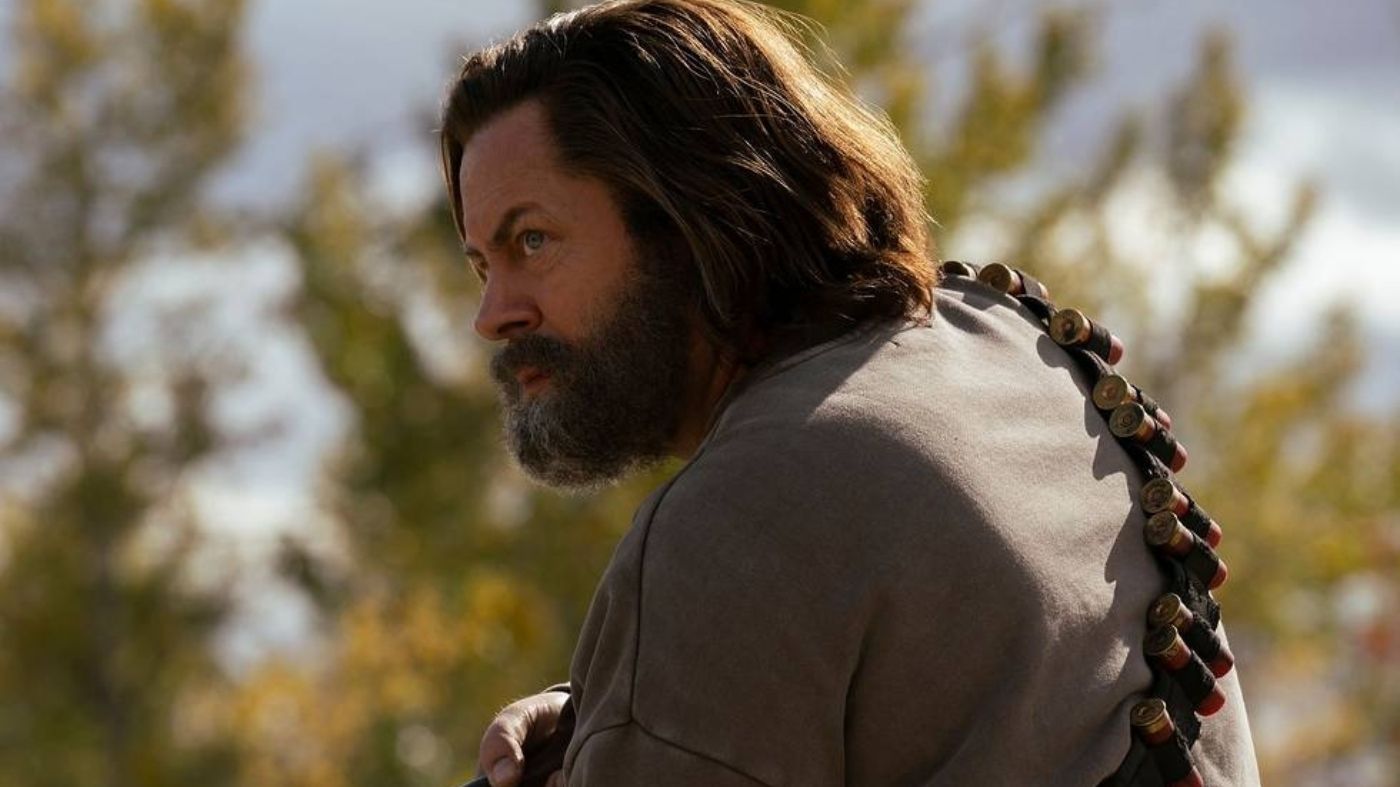Editor's note: The below contains spoilers for Episode 3 of The Last of Us and The Last of Us games.HBO’s adaptation of The Last of Us made waves this week. In only the third episode, they decided to pull out all the stops and give us an incredible self-contained story that was equal parts touching and tragic. We take a break from Joel (Pedro Pascal) and Ellie (Bella Ramsey) for most of the episode and enter an extended flashback following the story of Bill (Nick Offerman) and Frank (Murray Bartlett), the characters Joel and Ellie are trying to meet up with for help.
We follow them through 20 years of their relationship as they meet, fall in love, fight, and protect each other. Though they ultimately end up passing away peacefully together before Joel and Ellie arrive, we get an hour of time to watch their story unfold uninterrupted. It’s bittersweet and so insanely different from the way their story goes down in the game that you can’t help but wonder what inspired such a profound change to what was originally a relatively short detour in Joel and Ellie’s journey. The answer is quite simple, and it all leads back to some criticism surrounding Bill and Frank’s story when the game first came out in 2013.
Bill and Frank’s Original Story in the Game
We don’t get to know much about Bill and Frank in the game. There are no flashbacks or backstory given like in the show. Instead, we see everything in real-time with Joel and Ellie as they meet up with Bill (voiced by W. Earl Brown in the game). Bill’s similarly paranoid and has rigged the entire town with traps, but he’s suspiciously missing Frank. He explains that Frank was his partner but that he left, and he seems as though he’s deliberately trying to act like he doesn’t care about it. He’s mean, even more so than Joel, but he still helps Joel and Ellie navigate the town to try and find the truck they need for their journey. When they’ve finally navigated across town, they come upon the house with the truck inside but there they find something unexpected. Frank’s body. He’d become infected and hung himself from the ceiling. Bill is understandably distraught at the sight, and Joel finds a note at the scene that the player can choose to give to Bill. The note is from Frank, and it reads: I guess you were right. Trying to leave this town will kill me. Still better than spending another day with you.
After that, Joel and Ellie take the truck and leave and Bill stays behind. Presumably alive and presumably to spend the rest of his days alone. It’s bleak to say the least. The show does a complete overhaul on this story, keeping the characters and their traits intact but pivoting severely in approach. This was a wise choice for adaptation anyway and led to an incredibly impactful episode of television but more importantly it completely overhauls the elements of their original story that warranted critique.
The Criticism Around the Game's Ending for Bill and Frank
For those unfamiliar with the game or who came into the franchise later on, it may be hard to see where the criticisms around this storyline came from given the massive overhaul it was given for the show. But at the time of The Last Of Us’s debut, this subplot attracted some attention for its less-than-stellar handling of queer characters. This was, at the time, the only inclusion of a queer character in the story, and what we got was a single line about how Frank was Bill’s “partner” and Ellie snatching a gay porn magazine from Bill’s stash. The “he was my partner” line is the most overt reference we get to the true nature of Bill and Frank’s relationship. Other than that, we’re left to pick up the romantic undertones through context clues.
It’s far from stellar or even overt representation and the vagueness with which the game addressed Bill’s queerness. It was to a point where many players failed to recognize there was anything more than friendship between Bill and Frank. Though the game was recognized a little at the time for including a gay character at all, queer fans were disappointed with both how easy it was to overlook Bill being gay and the way it contributes to a long-standing tradition of gay relationships in media ending in tragedy. With Frank’s final words to Bill being what they are, it's understandable that reactions to this attempt at including a gay character were mixed.
It bears noting that in many ways this criticism has been remedied many times over in the games. Ellie was revealed to be a lesbian in the 2014 DLC Left Behind and goes on to have a relationship with Dina (Shannon Woodward) in The Last Of Us Part 2 which plays an extremely significant role in her character. And there are other characters like Lev (Ian Alexander), who is transgender, that help fill out the world with other queer people. It’s no longer a story that only contains crumbs of queerness that exist only for tragedy. Still, having the advantage hindsight does not mean those initial criticisms held no weight. And it’s clear the creators took that to heart, choosing to not only break entirely from the game’s canon when retelling Bill and Frank’s story but giving them an entire episode dedicated to their relationship. Instead of being a sad footnote in Joel and Ellie’s story, the show lets us see Bill and Frank’s entire story from start to finish.
The 'Last of Us' Show Makes Deliberate Departures From the Game
In the original story, we witness Bill as an extremely jaded and caustic man. He’s been alone for a while now though he doesn’t know Frank’s fate, and he’s very much settled back into his solo survivalist mentality. He’s not living a sort of high life in the television adaptation. No fresh meat, nice wines, or antique pianos, he’s living a similarly disheveled life to anyone else in the apocalypse. He’s extremely paranoid and seemingly hates everyone. This is preserved in the show, but it manages to feel fundamentally different because of how many departures the story makes from the source material. Giving Bill and Frank their own story gave us an opportunity to get closer to Bill than we could have originally, he’s so guarded around everyone that isn’t Frank that we’d never be privy to the sweetness he has in this adaptation had we seen them through Joel and Ellie’s eyes.
A few minor choices were made that, even with the different shape their story takes in this new medium, clearly reflect on some of those critiques levied in 2013. Not killing Frank alone is a big one. It takes what was originally a blindsiding tragedy, one that both Bill and the audience aren’t given much time to process, and transforms it into a (still tragic) extremely romantic gesture. Death in this version of the story is not a defeat for either of them, it’s a testament to their lives. That they have the luxury and the choice to go quietly at their leisure rather than succumb to something far worse is a mercy in the world of The Last Of Us. Choice in death is something so few are afforded even in our times that Bill and Frank’s ultimate fate seems incredibly gentle. And most importantly, neither of them had to go alone. They knew they had each other, and they knew they were loved up until their very last breaths, it’s a massive change in tone from their original diverging ends.
Along with that deliberate softening of Bill and Frank’s fates comes another choice borne from sensitivity. The show deliberately does not show us Bill and Frank’s bodies. Not right after they pass away and not later when Joel and Ellie find their way there. The door to the room they sequestered themselves in is barred and the only shot we get from inside that room is one looking out the window they left open, which watches Joel and Ellie as they drive away. At first blush, this could seem like a meaningless choice but for those familiar with the game it holds more weight. As explained above, Joel, Ellie, and Bill stumble upon Frank’s body originally while trying to find the truck. Despite how bleak the story often is, this moment is particularly so. Bill has to cut down Frank’s decaying body with his own hands and then read the cruel final message he left behind. It’s depressing at best and in poor taste at worst. So this initial blasé display is quite harrowing. It seems deliberate, then, that the show keeps its gaze away from their bodies. It pivots the meaning of their whole story. In their original incarnation, Bill and Frank’s story was a tragic and angry thing focused on death and decay but in the show, their story is about their life. We don’t see their bodies because it doesn’t matter; we don’t need to witness that, it’s a private affair. What the story and we as an audience are concerned about is how they lived and how they loved each other, not the tragic aftermath.
It’s shockingly sweet. For a story so riddled with tragedy, loss, and hopelessness, The Last of Us took what was perhaps its most bleak and depressing side plot and turned it into something beautiful. Those criticisms of vagueness or playing into a narrative of gay tragedy are broken completely by the new and improved version of Bill and Frank’s story. They still face a tragic end in a sense, but it feels completely different from the original. Instead of the angry, bitter, and lonely note we leave Bill alone with in the original game, they pass on together. It’s still sad, but the meaning has changed entirely, it’s become an act of love and not hate. It seems not only did co-creators Neil Druckmann and Craig Mazin take those critiques from a decade ago to heart, but they made a tremendous effort to create what is essentially a love letter to these characters. It truly goes to show that when creators listen to criticisms like this, we can continue to see even better queer stories.




